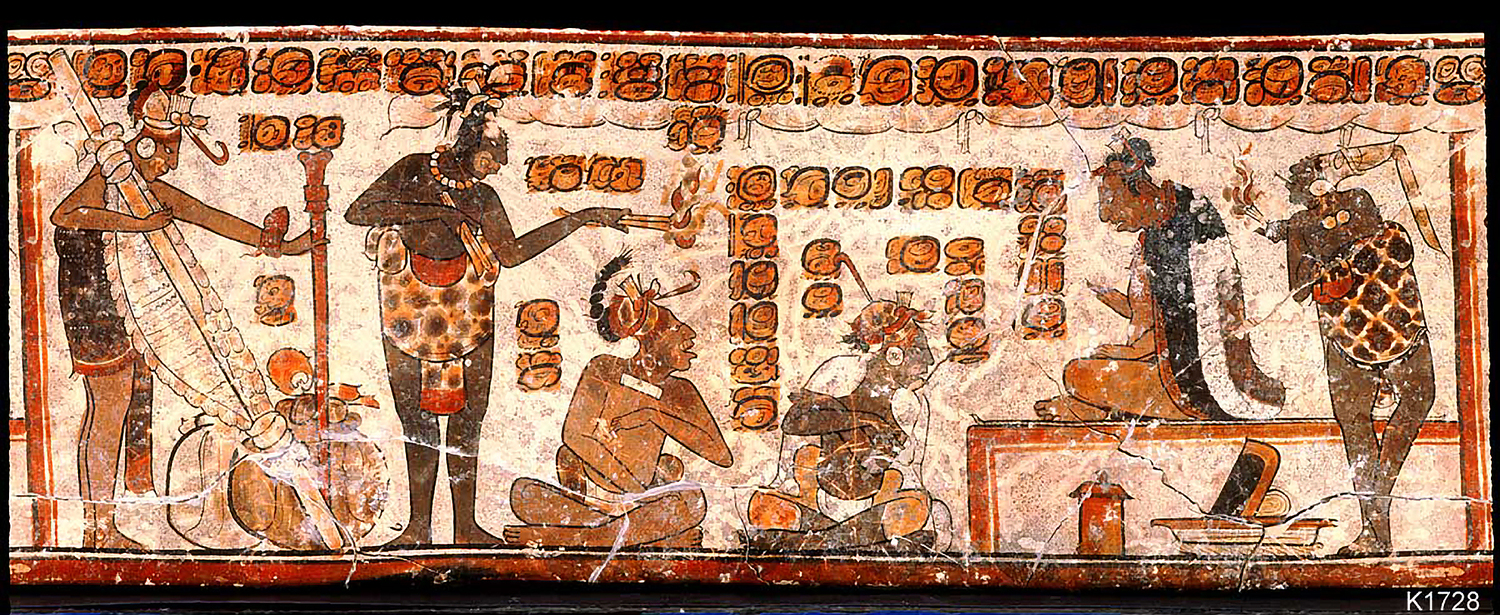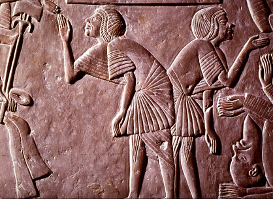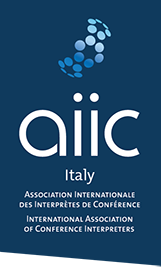History of the Profession
SINCE ANCIENT TIMES, INTERPRETERS HAVE CONTRIBUTED TO RELATIONS BETWEEN DIFFERENT PEOPLES AND CIVILISATIONS.
Two images testify to some characteristic features of the role of the interpreter, unchanged in every time and context. On this Mayan vase, the interpreter is seated in front of the dignitary's pedestal and translates: on his head is a headdress that ends with a red brush, a distinctive sign of cultured people and artists.


This Egyptian bas-relief portrays with great immediacy the interpreter 'divided' between different cultures and languages and loyal to both.
If you are interested in searching for the first interpreter, you will find fascinating articles by our colleague Christine Adams on the AIIC website: from Christopher Columbus to the Ottoman dragomen, from Caesar to the conquest of Everest, they give unprecedented glimpses of history, communication and cultural interaction.
The history of modern simultaneous interpretation with interpretation booths dates back to the Nuremberg trials. AIIC has organised numerous exhibitions to reconstruct the biographies, stories and dramas of the Nuremberg interpreters including the international travelling exhibition A Trial - Four Languages which also stopped off in Italy at the Altiero Spinelli Civic School for Interpreters and Translators in Milan and at the Forlì Campus Teaching Hub.
Today the profession of the conference interpreter is clearly defined at national and international level. There are master's degree courses all over the world, ISO standards and codes of conduct, but the core value is always the same, condensed in the oath of loyalty and neutrality of the interpreters at the Nuremberg Trials: “Do you solemnly swear to translate with fidelity and truth and to the best of your ability? I swear.”
